Young Irelanders: Exiles in Paradise
New Norfolk

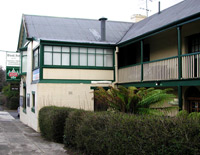 The Bush Inn
The Bush Inn
The Bush Inn was the site of many meals and the location of Smith O’Brien’s farewell dinner. It has been much altered but the core of the building and the cellars date from the 1850s. It is open for business providing meals and accommodation. It is said that the exiles also met regularly at the Bush Hotel, which still operates as a pub.
Glen Derwent (then the Elwin's Hotel)
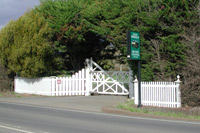
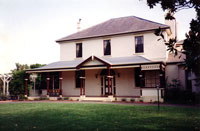 William Smith O’Brien was subsequently assigned to the New Norfolk district where he took up residence at Elwin's Hotel on 20 November 1850, where he lived for two years. Apparently reconciled to his new status O'Brien then set about enjoying the company of the local aristocracy who appeared to reciprocate these feelings. Mitchell visited O'Brien several times and was introduced to O'Brien's friends.
William Smith O’Brien was subsequently assigned to the New Norfolk district where he took up residence at Elwin's Hotel on 20 November 1850, where he lived for two years. Apparently reconciled to his new status O'Brien then set about enjoying the company of the local aristocracy who appeared to reciprocate these feelings. Mitchell visited O'Brien several times and was introduced to O'Brien's friends.
An unauthorised visit to O'Brien here in December 1850 led to Terence Bellew MacManus's arrest and his subsequent charge on 18 December with misconduct for being absent from his assigned district on 3 December. He was subsequently sent to a convict chain gang on the Tasman Peninsula (December 18, 1850).
Elwyn’s Hotel, now the Glen Derwent, has been run as a bed and breakfast and the owners have been willing to allow visitors to see O’Brien’s rooms. However the property is currently up for sale.
Bryn Estyn
O’Brien visited a number of local properties, mostly by walking. All of these are in private hands but many can be seen from the road. His descriptions of the river and the town itself are easily recognisable today. (See map from the frontispiece of Davis’ book To Solitude Consigned.) Bryn Estyn was a favourite place to visit.
MacManus House
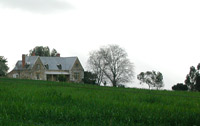
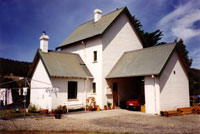 Terence MacManus lived for a time in a chalet-like house near the present-day Boyer Paper Mill, currently a private residence called ‘The Grange’. He enjoyed fishing, shooting and hunting. Not being a man of means he had to earn a living so he was allowed to relocate to Launceston.
Terence MacManus lived for a time in a chalet-like house near the present-day Boyer Paper Mill, currently a private residence called ‘The Grange’. He enjoyed fishing, shooting and hunting. Not being a man of means he had to earn a living so he was allowed to relocate to Launceston.
The Grange lies on the banks of the Derwent and can be best seen from the other (eastern) side of the river near the Boyer paper works. It is now in private hands.
